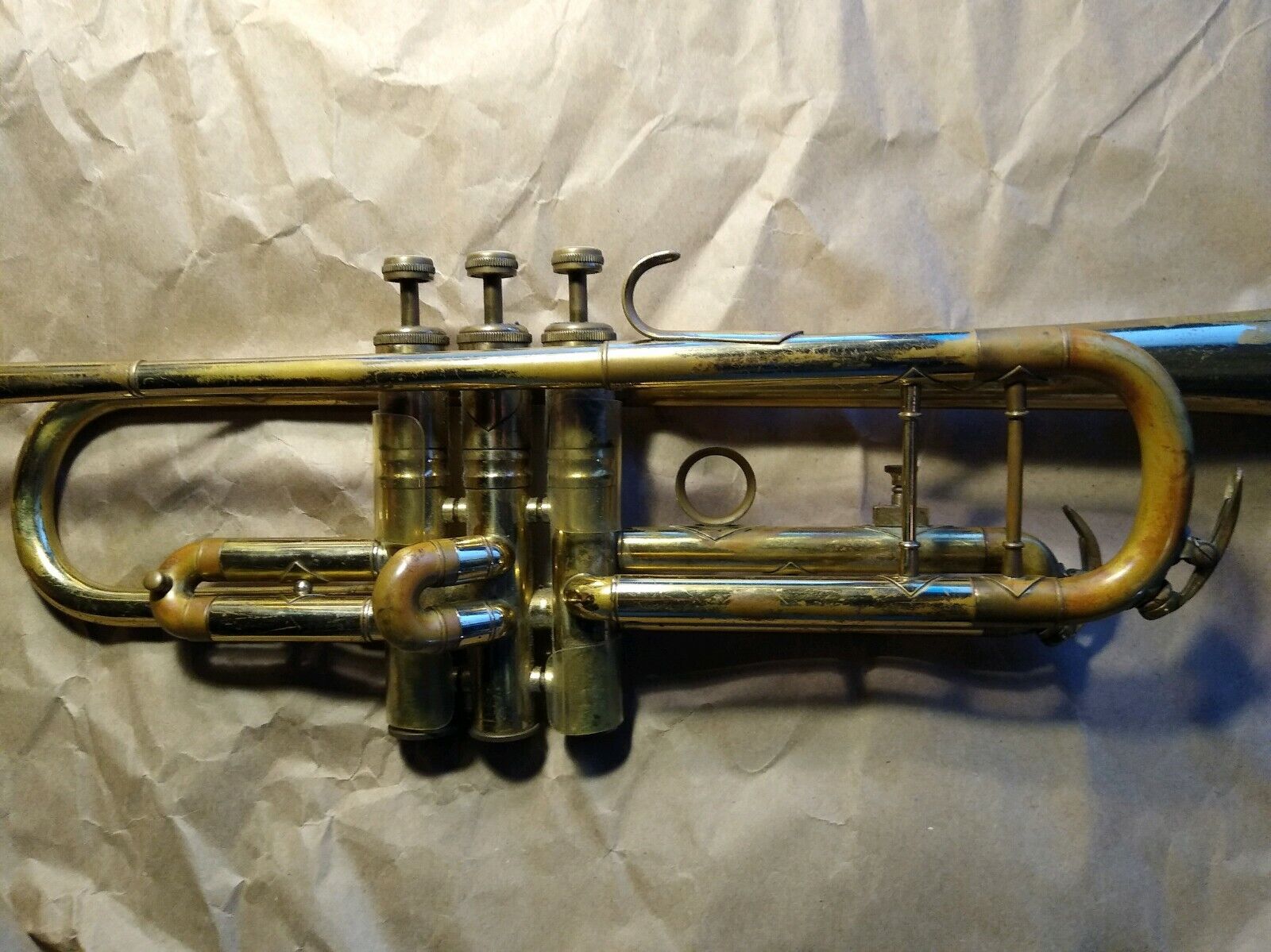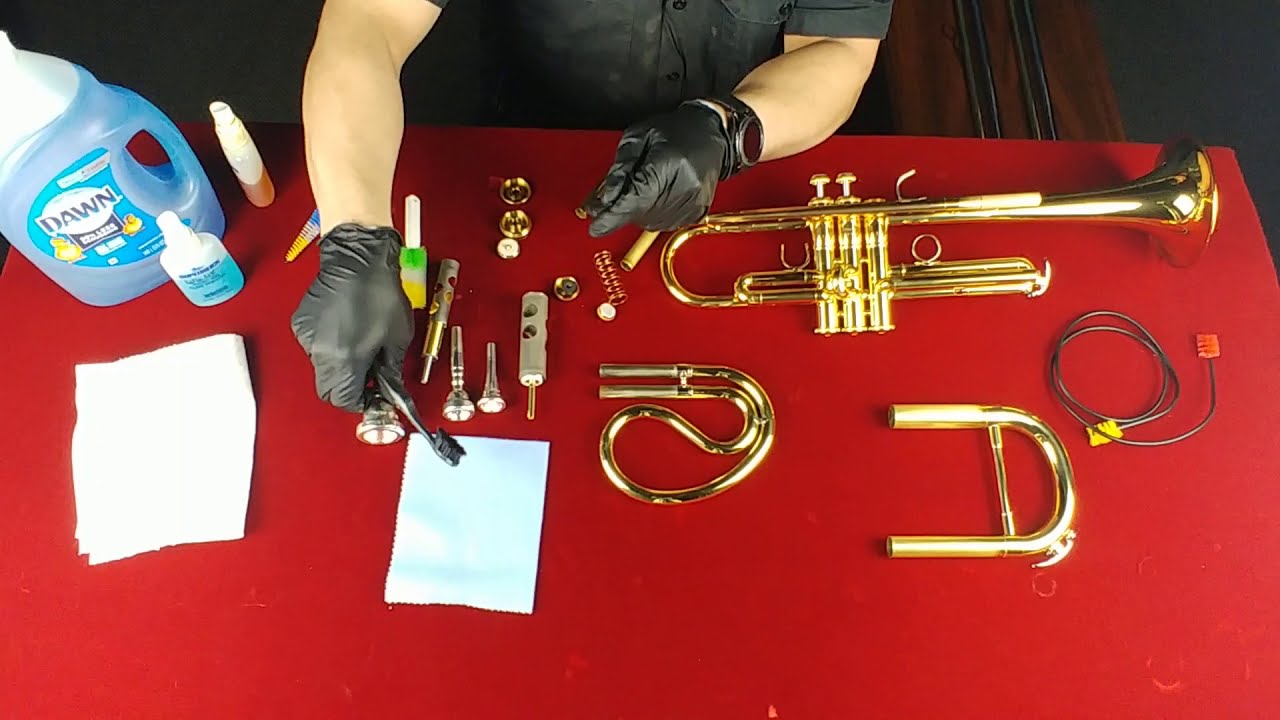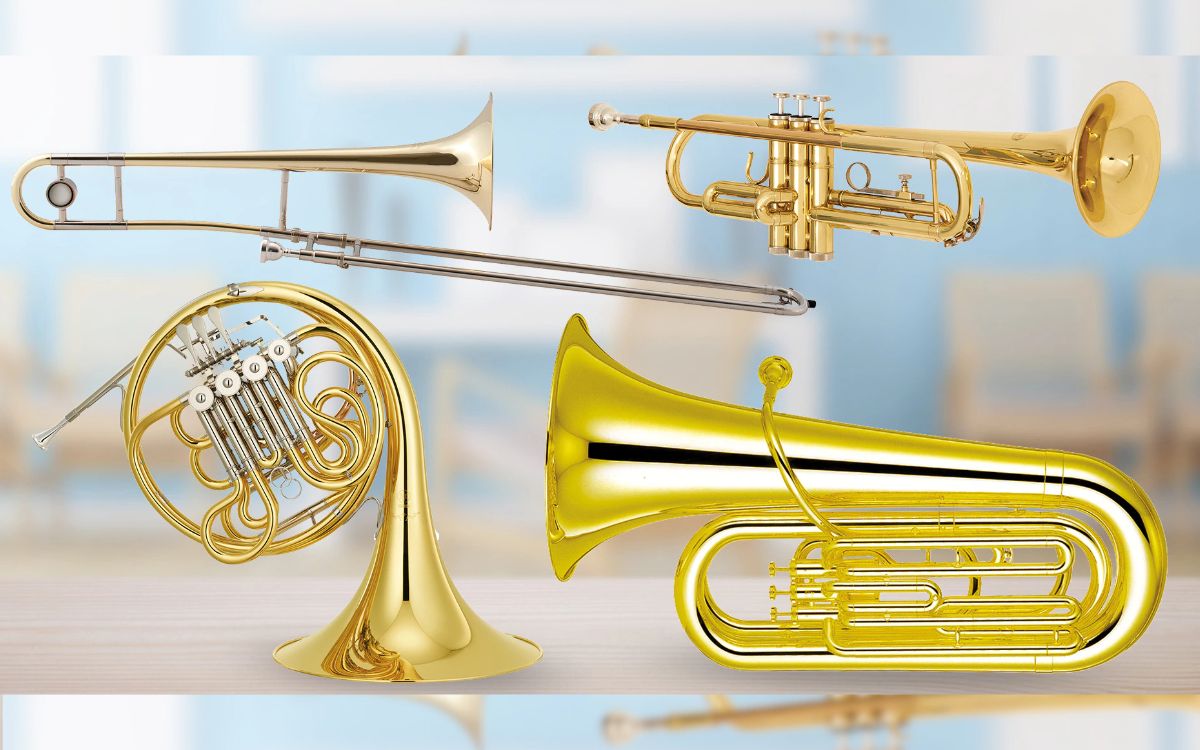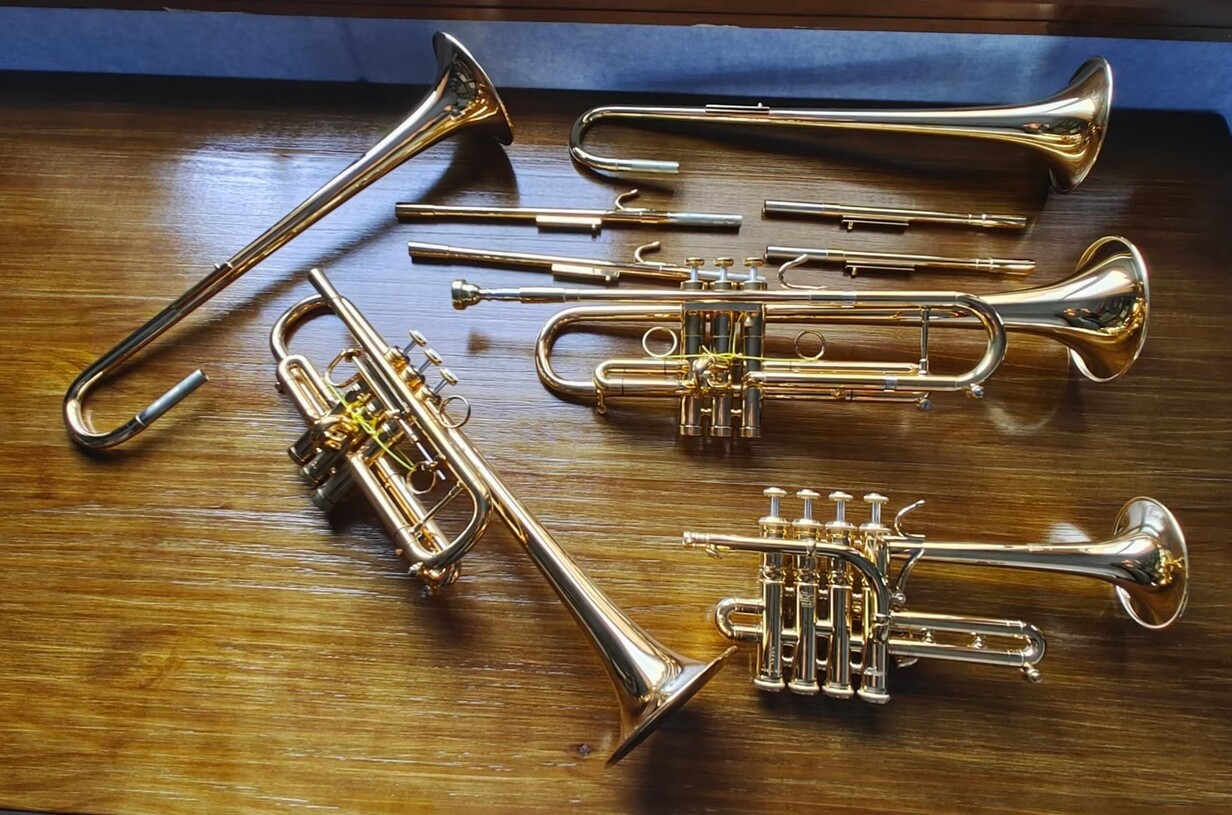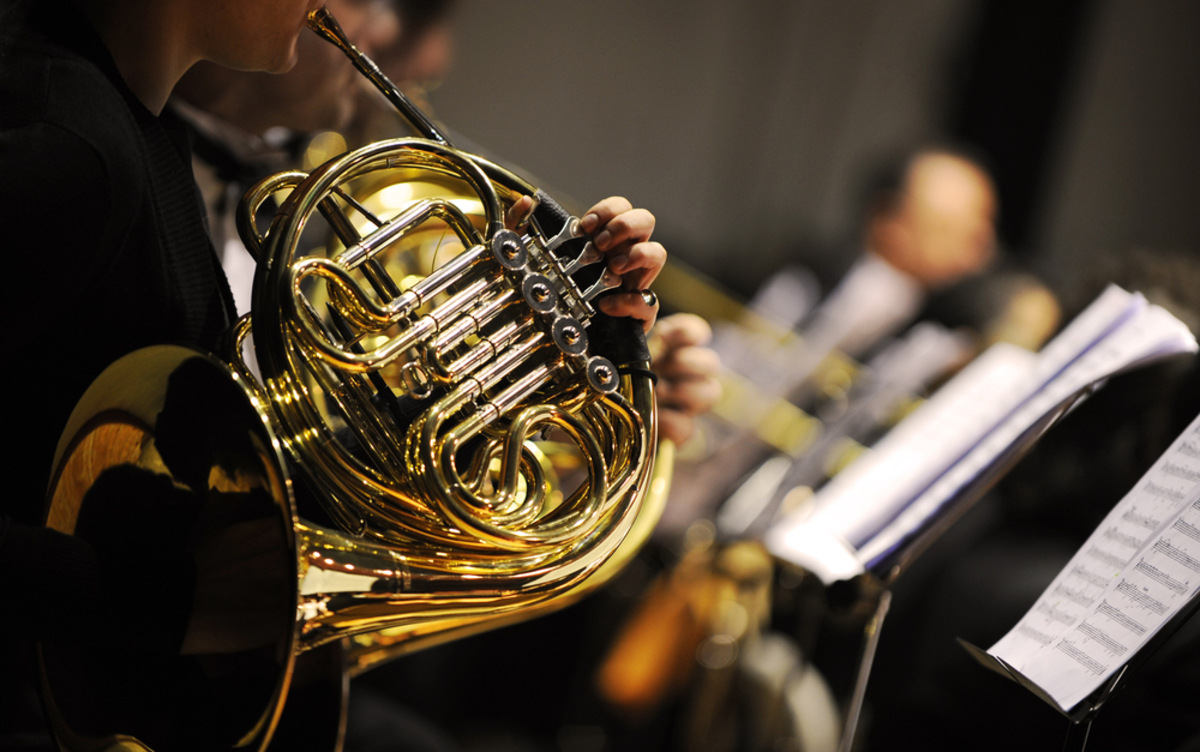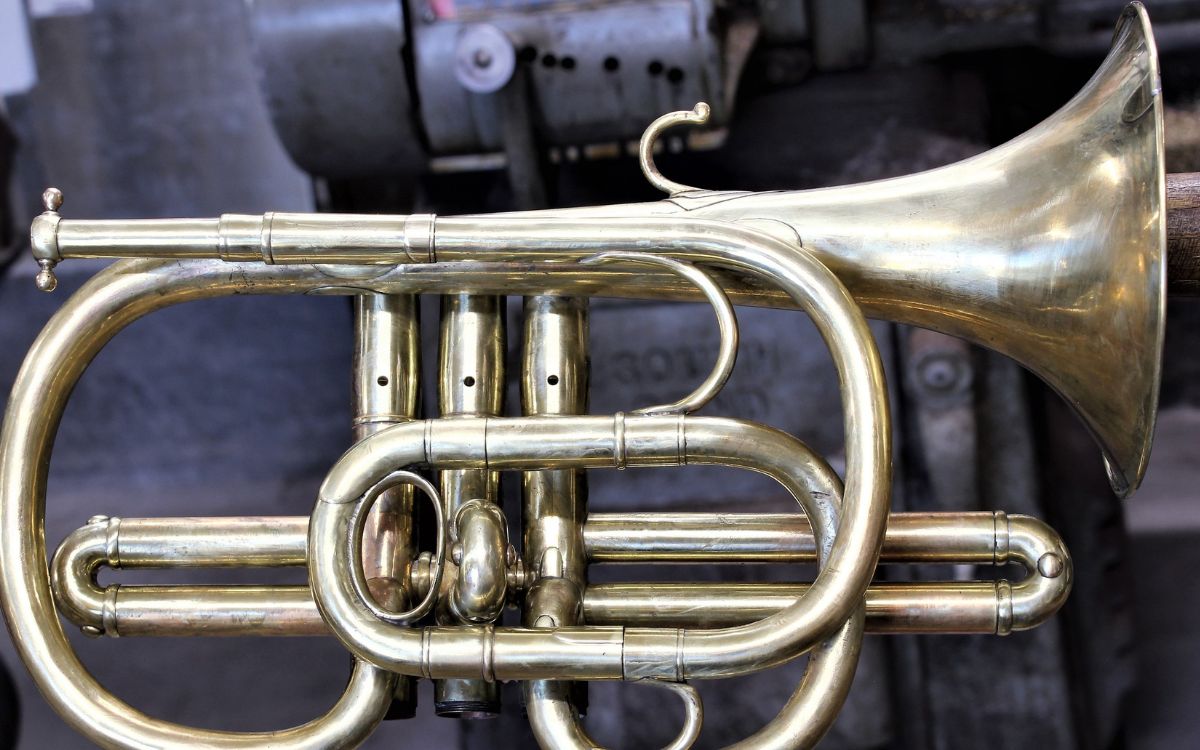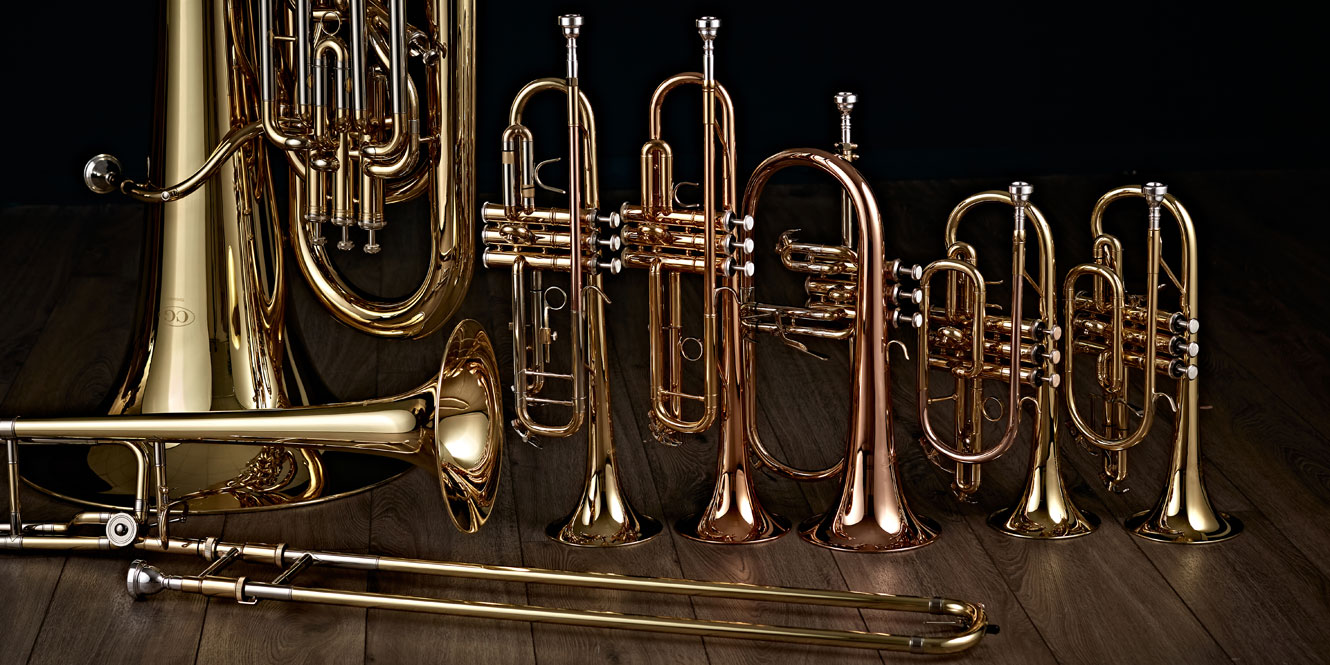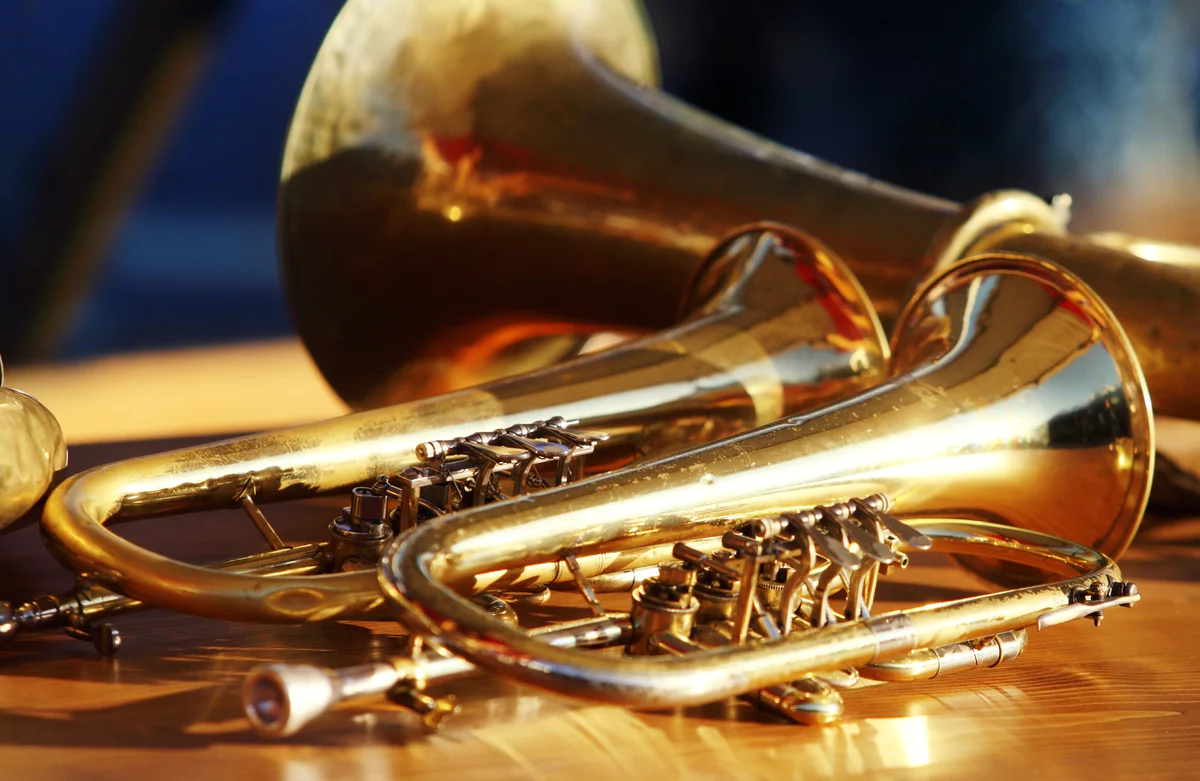Home>Instruments>Brass Instruments>How Cold Can You Play Brass Instruments Outside
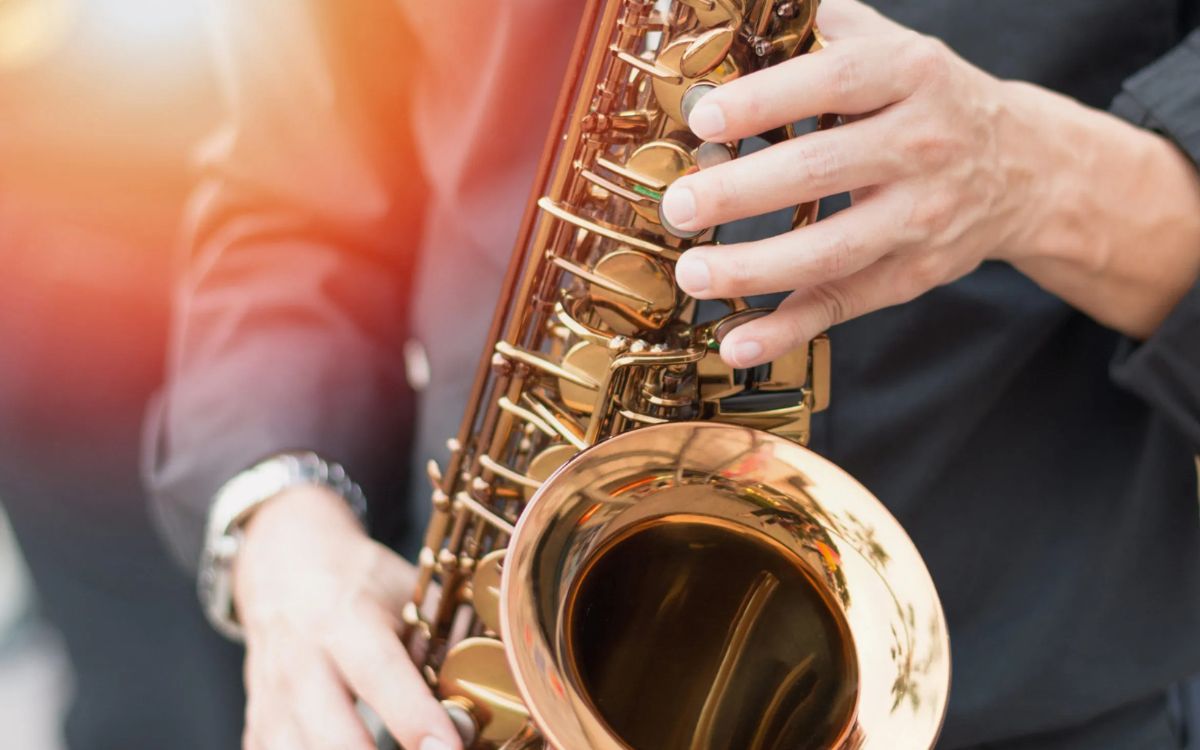

Brass Instruments
How Cold Can You Play Brass Instruments Outside
Published: January 15, 2024
Discover how cold weather affects brass instruments and find out the lowest temperature at which you can safely play these instruments outdoors.
(Many of the links in this article redirect to a specific reviewed product. Your purchase of these products through affiliate links helps to generate commission for AudioLover.com, at no extra cost. Learn more)
Table of Contents
Introduction
Brass instruments have been captivating audiences for centuries with their rich, vibrant tones. From the majestic sound of a trumpet to the warm melodies of a trombone, these instruments have a unique ability to captivate listeners and create a memorable musical experience.
However, as any musician knows, playing a brass instrument is not without its challenges. One of the most significant challenges can arise when playing in cold weather conditions. The frigid temperatures can have a detrimental impact on the instrument’s performance, making it essential for brass musicians to understand the effects of cold weather and how to navigate these challenges.
In this article, we will explore the factors that affect cold weather performance, how temperature affects brass instruments, and provide valuable tips for playing brass instruments in cold weather. We will also emphasize the importance of proper maintenance and care to ensure the longevity and optimal performance of your instrument.
So grab your brass instrument, bundle up, and let’s dive into the fascinating world of playing brass instruments in cold weather!
Factors that Affect Cold Weather Performance
Playing a brass instrument in cold weather poses certain challenges that can impact performance. Understanding the factors that influence cold weather performance is crucial for brass musicians to overcome these challenges effectively. Here are some key factors to consider:
- Temperature: The temperature of the surrounding environment plays a significant role in the performance of brass instruments. Cold temperatures can cause the metal in the instrument to contract, affecting the overall pitch and response. Additionally, extreme cold can hinder the flexibility of valves and slides, making them more difficult to move smoothly.
- Humidity: Humidity levels have an influence on brass instruments in cold weather. Low humidity levels can cause the instrument to dry out, leading to potential cracks in the wood or damage to the valves and slides. On the other hand, high humidity can cause condensation to accumulate inside the instrument, impacting the overall sound quality.
- Mouthpiece and Breath Control: In cold weather, the mouthpiece of a brass instrument can become colder, affecting a musician’s ability to maintain proper embouchure. Additionally, cold air is denser, which requires musicians to have more control over their breath to produce the desired sound. Proper breath control becomes even more crucial in cold weather.
- Instrument Material: The material of the brass instrument can also affect its performance in cold weather. Different alloys and finishes may respond differently to temperature changes, impacting the tone, response, and overall playability of the instrument.
Understanding these factors is essential for musicians to adapt their technique and approach when playing in cold weather conditions. By being aware of these variables, brass musicians can make the necessary adjustments to overcome any challenges and deliver a remarkable performance, regardless of the temperature outside.
How Temperature Affects Brass Instruments
Temperature has a profound impact on the performance and sound quality of brass instruments. Understanding how temperature affects these instruments can help musicians navigate cold weather conditions effectively. Here are some key ways in which temperature can impact brass instruments:
- Pitch and Intonation: Cold temperatures cause the metal in brass instruments to contract. This contraction leads to a slight decrease in the overall length of the instrument, resulting in a higher pitch. Musicians may need to compensate for this change in pitch by adjusting their embouchure or using alternate fingerings to maintain proper intonation.
- Response and Articulation: Extreme cold can make the valves and slides of brass instruments less responsive. The lubricants on the valves can thicken or freeze, causing sluggish or sticking valves. The cold can also affect the slide mechanisms, making them more difficult to move smoothly. This can impact the instrument’s articulation and make it more challenging to play passages that require quick and precise movements.
- Sound Quality: Cold temperatures affect the vibrations of the instrument, resulting in changes to the overall sound quality. The sound may become thinner, less resonant, or less vibrant in colder conditions. Musicians need to adapt their playing technique to compensate for these changes and ensure a rich, full-bodied sound.
- Condensation: In cold weather, condensation can form inside the instrument due to the temperature difference between the warm breath and the cold instrument. This condensation can affect the airflow and cause a gurgling or sputtering sound. Musicians should be mindful of this and regularly release the condensation by using the water keys or the spit valve.
Being aware of these effects is vital for brass musicians when playing in cold weather. By understanding how temperature influences pitch, response, sound quality, and condensation, musicians can make the necessary adjustments to ensure optimal performance, regardless of the external conditions.
Effects of Low Temperatures on Valves and Slides
Valves and slides are crucial components of brass instruments, allowing musicians to control the pitch, tone, and articulation of their playing. However, in low temperatures, these vital parts can be significantly affected. Understanding the effects of low temperatures on valves and slides is essential for brass musicians to maintain optimal performance in cold weather conditions. Here are some key considerations:
- Valves: The cold temperatures can cause the lubricants on the valves to thicken or even freeze, resulting in sluggish or sticking valves. This can hinder the speed and responsiveness required for quick passages or technical playing. It is crucial to keep the valves warm and properly lubricated to maintain their smooth operation.
- Slides: The slide mechanisms in brass instruments can also be adversely affected by low temperatures. The cold can cause the slides to become stiff and difficult to move smoothly. This can disrupt the musician’s ability to make seamless transitions and adjust the pitch as needed. Regularly applying a suitable slide lubricant and keeping the slides warm can help alleviate these issues.
- Corrosion: Low temperatures combined with high humidity levels can accelerate the corrosion process on the valves and slides of brass instruments. This can lead to corrosion build-up, making the valves and slides even more challenging to operate smoothly. Proper cleaning and maintenance routines, including thorough drying and applying corrosion inhibitors, are crucial to prevent or minimize corrosion in cold weather conditions.
To mitigate the effects of low temperatures on valves and slides, brass musicians are encouraged to warm up their instruments gradually before playing. Using warm air to blow through the instrument and gently moving the valves and slides can help loosen them up and improve their functionality. Additionally, regular maintenance, such as cleaning, lubricating, and inspecting the valves and slides, is vital to ensure their optimal performance and longevity in cold weather.
Tips for Playing Brass Instruments in Cold Weather
Playing brass instruments in cold weather can be challenging, but with the right approach and preparation, musicians can overcome these challenges and deliver a remarkable performance. Here are some helpful tips to consider when playing brass instruments in cold weather:
- Warm Up Gradually: Before playing, allow your instrument to acclimate to the surrounding temperature gradually. This will help prevent sudden changes that can affect the instrument’s pitch and response. Additionally, warm up your embouchure and muscles by starting with long tones and slow, controlled exercises.
- Warm Air: Blow warm air through the instrument before playing to help warm up the metal, lubricants, and air passage. This will aid in maintaining proper intonation and response. Take a few minutes to blow warm air through the lead pipe, valves, and slides to ensure they are ready for optimal performance.
- Proper Breathing: In cold weather, the denser air requires more breath control. Focus on taking deep, controlled breaths to maintain steady airflow and produce a consistent, vibrant sound. Concentrate on using your diaphragm and abdominal muscles to support your breath and create a powerful tone.
- Protect the Instrument: Use a case or gig bag with adequate insulation to protect your instrument from extreme temperatures when traveling. Avoid leaving the instrument in a cold car or exposed to harsh weather conditions for extended periods. When not playing, keep the instrument in a warm and dry place to prevent damage or moisture buildup.
- Regularly Release Condensation: In cold weather, condensation can accumulate inside the instrument. Remember to frequently release the condensation by using the water keys or spit valve. This will help prevent gurgling or sputtering sounds and ensure optimal airflow and sound quality.
- Stay Hydrated: Cold weather can cause dehydration, which can affect your playing ability. Remember to stay hydrated by drinking plenty of water before, during, and after playing. Proper hydration will help maintain optimal muscle function and keep your embouchure in top shape.
- Proper Maintenance: Regularly clean and lubricate your instrument to prevent corrosion and ensure smooth operation. In cold weather, pay extra attention to cleaning and drying your instrument thoroughly after each use. Use appropriate lubricants for valves and slides to maintain their functionality in low temperatures.
By following these tips, brass musicians can adapt to the challenges of playing in cold weather and continue to produce exceptional music. With proper warm-up, instrument care, and technique, you can overcome the effects of low temperatures and deliver outstanding performances even in the coldest of conditions.
Importance of Proper Maintenance in Cold Weather
Proper maintenance is crucial for brass instruments year-round, but it becomes even more essential in cold weather conditions. Cold temperatures, combined with other factors like humidity and condensation, can significantly impact the performance and longevity of brass instruments. Here are some key reasons why proper maintenance is vital in cold weather:
- Preventing Damage: Cold weather can make the metal of brass instruments more brittle, increasing the risk of damage. Proper maintenance, including regular inspections and repairs, can help identify and address any vulnerabilities before they lead to more significant issues. This proactive approach can prevent costly repairs and ensure the instrument’s structural integrity.
- Protecting Finish: The cold weather can affect the finish of brass instruments, making them more susceptible to discoloration, scratches, and other cosmetic damage. Regular cleaning and polishing, using appropriate cleaning agents and methods, can help protect the instrument’s finish and maintain its aesthetic appeal.
- Preserving Valves and Slides: Valves and slides are critical components of brass instruments that can be particularly affected by low temperatures. Proper maintenance, including regular cleaning, lubrication, and thorough drying, can help prevent corrosion, freezing, and sticking of these parts. This ensures smooth and responsive operation, allowing musicians to play without hindrance.
- Preventing Condensation-Related Issues: In cold weather, condensation can build up inside the instrument due to the temperature difference between the warm breath and the cold metal. This can lead to moisture-related problems such as corrosion, mold growth, and deterioration of pads or corks. Regular cleaning, drying, and applying moisture-absorbing materials can help prevent these issues and preserve the instrument’s functionality.
- Ensuring Optimal Performance: Well-maintained instruments perform better, and this is particularly true in cold weather. Regular maintenance helps to maintain proper intonation, response, and overall sound quality in varying temperature conditions. It allows musicians to play with confidence and expressiveness, ensuring their musical performances are at their best.
Regardless of the weather, proper maintenance is vital for the longevity and optimal performance of brass instruments. However, in cold weather, the challenges are intensified, making it even more crucial to pay attention to cleaning, lubrication, inspection, and general care. By prioritizing maintenance, brass musicians can protect their investment, ensure consistent performance, and enjoy their instruments for years to come, regardless of the temperature outside.
Frequently Asked Questions
Here are answers to some common questions about playing brass instruments in cold weather:
- Q: Can playing brass instruments in cold weather damage them?
- Q: How should I warm up my brass instrument in cold weather?
- Q: How often should I clean and lubricate my brass instrument in cold weather?
- Q: Can cold weather affect the pitch of a brass instrument?
- Q: How do I prevent valves and slides from sticking in cold weather?
- Q: Is it necessary to warm up the mouthpiece in cold weather?
A: Cold weather can potentially damage brass instruments if they are not properly maintained or protected. Extreme temperatures, condensation, and low humidity levels can all have negative effects on the instrument’s performance and structure.
A: To warm up your instrument, gently blow warm air through the lead pipe, valves, and slides. Some musicians also use warming bags or heat pads specifically designed for musical instruments to help warm them up gradually.
A: Regular cleaning and lubrication are crucial for brass instruments, regardless of the weather. In cold weather, however, it is even more important to pay attention to proper maintenance. Clean your instrument regularly and lubricate the valves and slides with appropriate lubricants to ensure their smooth operation.
A: Yes, cold temperatures can cause the metal in brass instruments to contract, resulting in a slightly higher pitch. Musicians may need to adjust their embouchure or use alternate fingerings to maintain proper intonation.
A: To prevent valves and slides from sticking in cold weather, use a suitable lubricant designed for low temperatures. Apply it regularly to keep the valves and slides moving smoothly. Remember to keep your instrument warm and ensure proper drying after playing to minimize condensation build-up.
A: Yes, it can be beneficial to warm up the mouthpiece in cold weather. The cold mouthpiece can affect your embouchure and make it more challenging to maintain proper control. You can warm up the mouthpiece by holding it in your hands or using warm water to raise its temperature slightly.
If you have any further questions or concerns about playing brass instruments in cold weather, it’s always recommended to consult with a professional music teacher or instrument technician who can provide personalized guidance based on your specific instrument and circumstances.
Conclusion
Playing brass instruments in cold weather requires a combination of preparation, technique, and proper maintenance. The frigid temperatures and other environmental factors can affect the performance and longevity of these instruments. However, with the right approach, musicians can overcome the challenges and continue to deliver exceptional musical performances.
Understanding the factors that influence cold weather performance, such as temperature, humidity, and instrument material, is paramount. Adapting breathing techniques, warming up gradually, and ensuring proper instrument maintenance become essential in cold weather conditions. Proper lubrication, regular cleaning, and protecting the instrument from extreme temperatures and condensation are all important aspects of maintaining optimal performance.
By following the tips outlined in this article, brass musicians can navigate the difficulties of playing in cold weather and produce remarkable music. Taking care of the instrument, adjusting playing technique, and being mindful of the effects of low temperatures on valves and slides will contribute to consistent and impressive performances.
Remember, it’s crucial to consult with professionals for personalized advice and guidance based on your specific instrument and circumstances. With proper care and attention, brass musicians can conquer the challenges of playing in cold weather and continue to create beautiful music, no matter the temperature outside.

